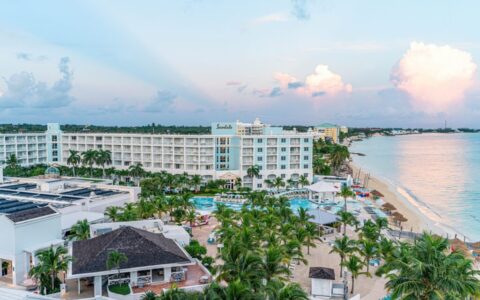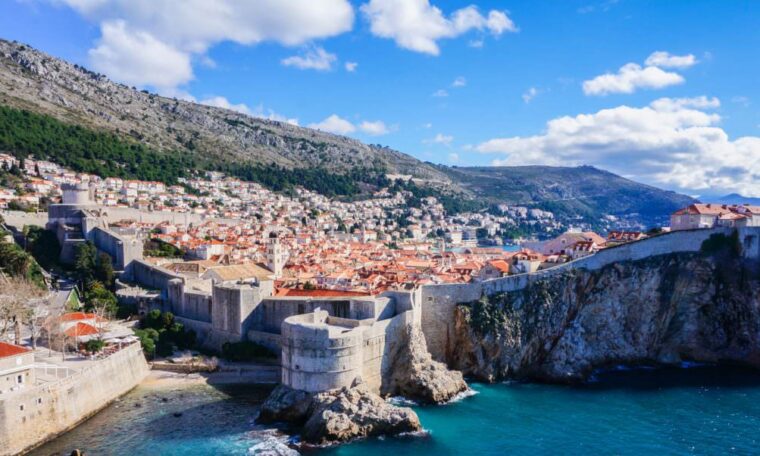
Mention the word Croatia, and Dubrovnik is probably the first city that springs to mind. I can’t blame you; this is one of my favorite cities in the world. Sure, it’s very busy in the summer months, but living in Dubrovnik is an experience like no other.
As a digital nomad living in Dubrovnik, you’ll find more than enough to fill your time—so much so that you’ll probably need to factor in a few extra days off. Having spent a fair amount of time in this beautiful place, I’m well placed to advise you on the ins and outs of life in one of Croatia’s most beautiful cities.
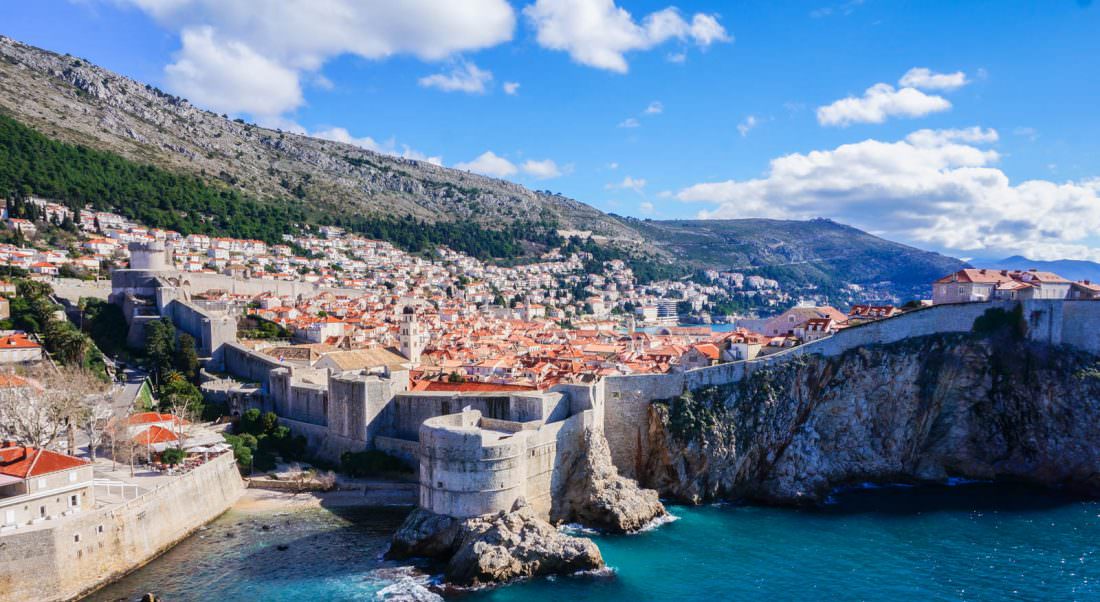
About Dubrovnik
Dubrovnik is located in the southern Dalmatia region, lapped by the glittering waters of the Adriatic. It’s certainly Croatia’s most famous and busiest city during the summer months, but I also found it charming during the winter.
The only potential downside to the slower (and colder) months is that most things close; however if that doesn’t bother you, you should enjoy the slower pace of life.
It’s a particularly historic city, dating back to around the 7th century, and its most famous spot is the city walls. If you’re a Game of Thrones fan, you’ll be thrilled to know that there are several filming sites to discover around the city.
For me, life in Dubrovnik is about eating good food, socializing, taking in the beautiful scenery, and exploring the neighboring regions. Sure, it can get busy during the peak summer months, but there’s so much to see and do that it’s easy to escape the crowds for a few days.
Digital Nomad in Dubrovnik: Personal Experience

Since Croatia launched its digital nomad visa (more on that later), Dubrovnik has become a hotspot for digital nomads, especially during the summer months. I enjoyed visiting during the autumn months in particular, as I found a great social scene without the major crowds.
As you can imagine, Dubrovnik isn’t the cheapest city thanks to its touristic label, but there are plenty of ways to cut costs. I enjoyed my time in the city and found it really easy to make new friends and meet other people. The internet is fast, there are plenty of great cafes to work from, and overall, I had a fantastic quality of life during my stay.
I found the peak summer months, particularly July and August, a little too populated, and I don’t advise you to attempt to walk the city walls at this time. However, the weather is amazing, there are some great beaches nearby, and you’re sure to love the full-on summer vibe.
Is Dubrovnik Safe?
The good news is that living in Dubrovnik as a digital nomad is unlikely to pose any significant safety problems. I never felt unsafe or unnerved during my time there, and overall, Dubrovnik is considered a safe place. Of course, it’s a large city so always use your common sense and remember that in busy areas, there’s always a chance of pickpockets.
Despite the small risk of petty theft, I felt very at home in Dubrovnik and often walked around on my own without feeling any need to stick to the busier areas. In fact, I felt very safe in Croatia overall.
The biggest issue for me was the crowds around the city wall areas during the peak summer months, but that’s avoidable if you find large groups of people a little overwhelming.
Best Areas to Live in Dubrovnik
Dubrovnik isn’t a particularly sprawling city, but there are some ideal areas to base yourself as a digital nomad. Here are some of my recommendations:
1. Old Town
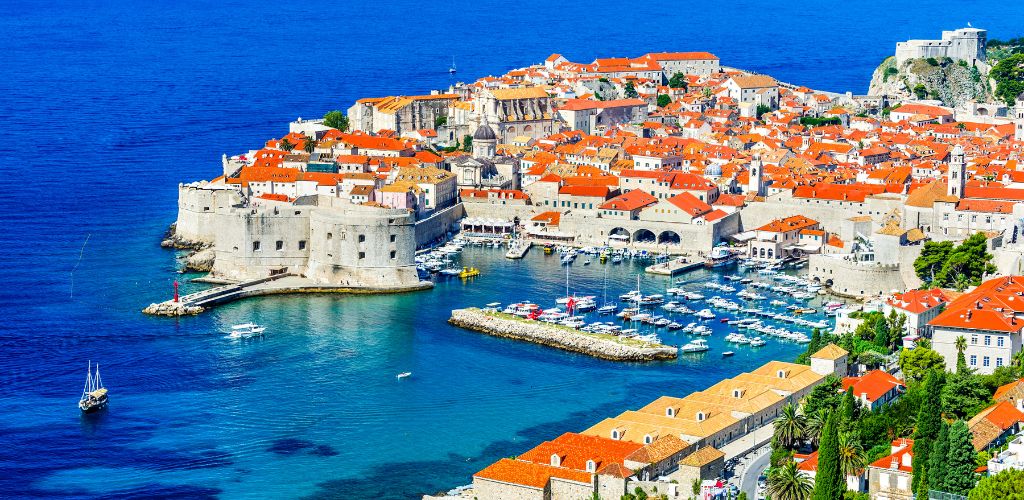
If you want to be as centrally located as possible, the Old Town is for you. I spent a lot of my time here, and although I didn’t seek accommodation in the area, I found it a pretty vibrant and fun spot. The only downside is that you’re likely to spend more on rent, but if you can find someone to share with, you’ll save cash.
When working remotely in Dubrovnik, choosing to stay in the Old Town cuts down on commuting costs. It places you in the heart of the city and means you’re never too far away from nightlife, restaurants, and attractions. There are also plenty of fantastic cafes to work from in this neighborhood.
2. Lapad
If you want to stay somewhere that still has a lively vibe but isn’t quite as central as the Old Town, I’d recommend Lapad. This neighborhood is pedestrianized, so you’re not going to be disturbed by traffic. It’s also home to some pretty cafes, restaurants, and a welcoming seaside view.
I liked Lapad as I found it to be a bit more chilled out compared to the Old Town. There are plenty of cafes to work from in this area, and rent is slightly lower because it’s not quite as central. It’s also pretty easy to get to the Old Town via bus if you want to be right in the middle of the city itself.
3. Babin Kuk

I stayed in the Babin Kuk area for a while and I really liked it there. It’s slightly out of the city center, around 6.5km/4 miles, but it’s easy to get to the Old Town via bus. I enjoyed the slower pace and the fact that there were fewer crowds. The only downside is that rent isn’t that cheap; it’s classed as being quite high-end.
However, if you want to live by the beach and enjoy lazy days in cafes with a view, this is a good spot. I met many other remote workers in this neighborhood, and because it’s quieter, I felt less overwhelmed by noise and crowds.
4. Ploče
If you’re thinking about living in Dubrovnik and want to be somewhere a little more luxurious, Ploče is a good place to consider. Here, you’ll find some fancy hotels and Airbnbs, and while the price is slightly higher, the area offers a sophisticated vibe and is within walking distance of the Old Town.
I found Ploče quite a comfortable and welcoming place. Banje Beach is also nearby, so it’s a good choice if you enjoy beach time during your downtime. There are also plenty of nightlife options around, without being right in the thick of it. Personally, I feel this neighborhood is a great source of middle ground between regular life and touristic fun.
How to Find Accommodation in Dubrovnik
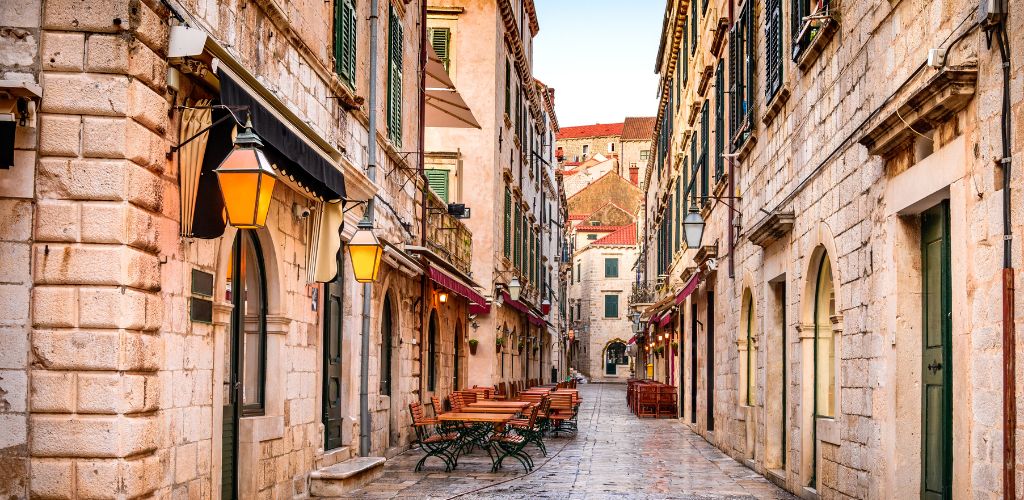
Finding accommodation in Dubrovnik can be tricky if you leave it a little too late to begin your search. I recommend planning to arrive a month or so before the summer season begins, so you can secure a place to stay. If you’re visiting in the winter months, you’ll find accommodation pretty easy to find.
1. Booking.com: I used booking.com to find hostels and serviced accommodation in Dubrovnik and always found great prices. You can also search just outside of the city center to keep costs low. However, I’d recommend booking as far in advance as possible, to avoid the best prices being snapped up.
2. Airbnb: There are many long-stay apartments available in Dubrovnik for decent prices. Again, it’s best to book ahead of time as the summer season becomes very busy and many people have the same idea—find somewhere to stay! Lapad is a particularly popular place for Airbnbs.
3. Facebook groups: If you search on Facebook, you’ll find many groups for Dubrovnik itself, including digital nomad groups. This is a good way to find other like-minded people who you may be able to share accommodation with and keep costs low. It’s also a good place to find extra tips on saving money and things to see and do.
Cost of Living in Dubrovnik
I feel the cost of living in Dubrovnik is slightly higher than in the rest of the country, but that’s likely because it’s such a tourist place. Overall, however, it’s on par with most large European cities, and if you know how to cut costs, you’ll keep cash in your pocket.
Restaurants and Groceries
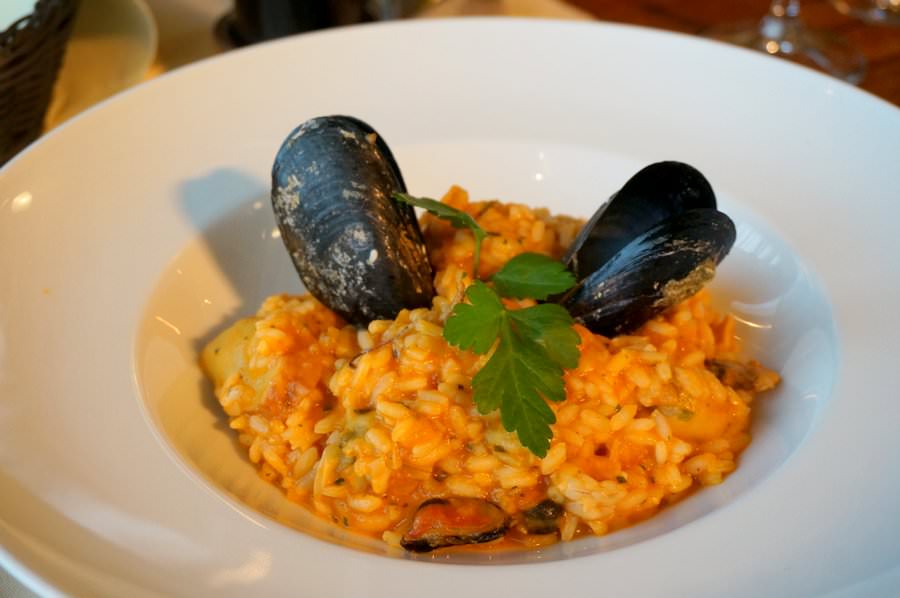
If you choose to eat at restaurants targeting tourists, you’ll quickly run out of cash. For example, the cost of a meal in a moderate tourist restaurant in the Old Town will cost you around €30-€40, ($32-$43) depending on what you have.
If you avoid those places and instead go to small, local restaurants away from the city center, you’ll find lower prices; I often ate in a traditional place in Lapad for around €15/$16, which is quite a saving.
If you can, it’s best to cook at home as you’ll find groceries quite reasonably priced. Head to the fresh fruit and vegetable markets to stock up on fresh produce and go to the local butcher for your meat. In general, you can purchase a week’s worth of groceries for less than €50/$53.
Accommodation Costs
Accommodation is most likely to take the largest chunk of your money. The cost of an apartment varies according to how close or far away you are from the Old Town, but on average, you’re looking at around €650/$690 per month. Your utilities, such as electricity, water, gas, and internet are on top of that price.
During the summer, you’ll need at least a fan, but air-conditioning if probably preferable. On average, utilities will cost around €350/$370, depending on your usage.
For these reasons, it’s best to try and share accommodation if you can, so you can halve these prices and save as you go. However, you may find that Airbnb works out cheaper if you can find somewhere that allows long-term stays. Again, avoid the Old Town to keep prices a bit lower.
Transportation Costs in Dubrovnik
The good news is that as a Dubrovnik digital nomad, you’ll find it easy to get around. I found the city pretty walkable, and the center is all pedestrianized, which makes getting around on foot a lot easier. This is a great way to save money.
If you want to travel outside of the city center, the bus network is reliable and relatively cheap. A one-way ticket costs around €2/$2.10, and I found buses really easy to use. I’d recommend only using taxis or Uber when you need to, e.g. if you need to get home late at night; they’re quite expensive and will eat into your budget.
SIM Cards and Data
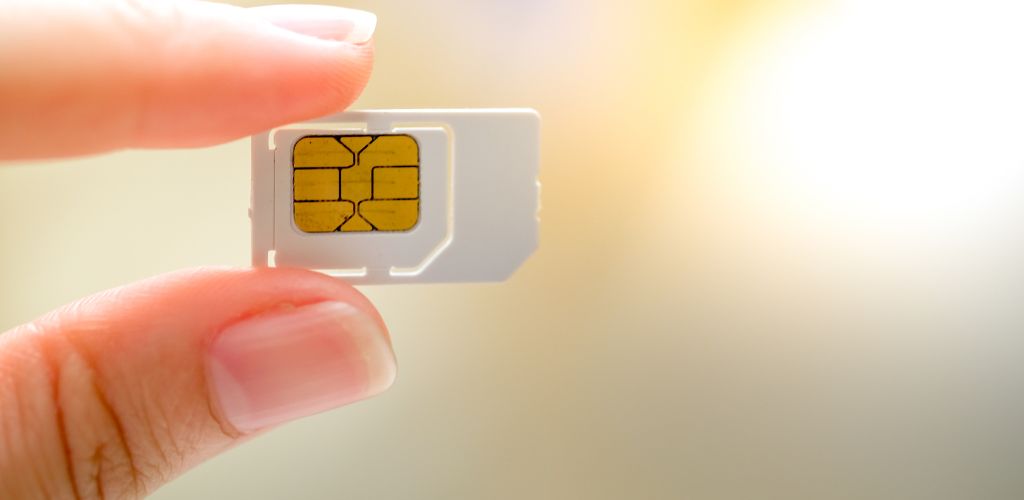
I used Hrvatski Telekom (T-Mobile) for my SIM card needs, and it covered my calls and data at reasonable costs. It’s really easy to get a SIM card; you simply take your passport into a store in the city center and they’ll set you up. A SIM card is affordable, at around €5/$5.30.
Other reliable SIM providers include A1 and Telemach. You can also use an eSIM, with Airalo being the most popular option.
Whichever option you choose, it’s easy to top your phone up at the end of the month, either online or by visiting a store in the city center.
Money Saving Tips for Dubrovnik
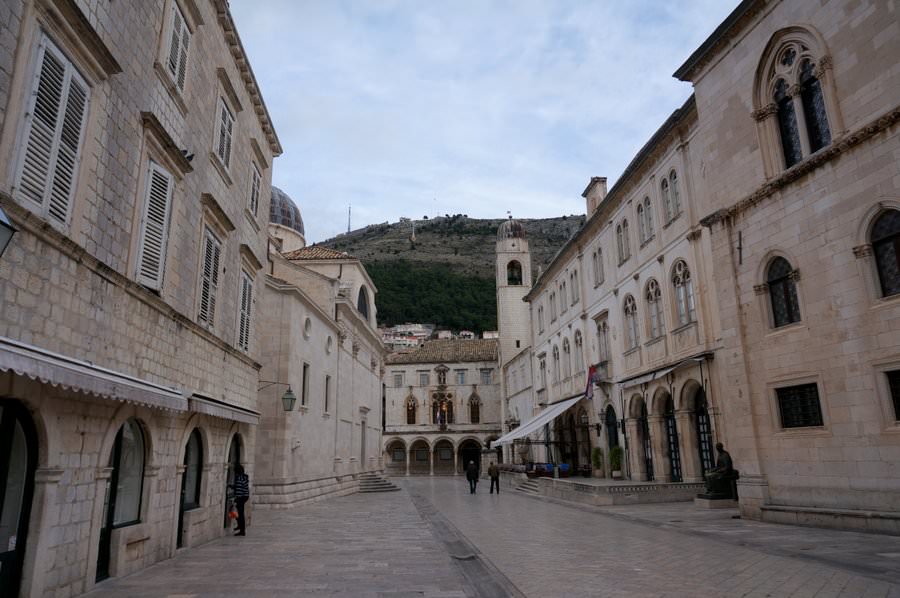 The off season may have some cloudy days, but you’ll save a lot of money
The off season may have some cloudy days, but you’ll save a lot of money
Dubrovnik is one of the most expensive places in Dubrovnik, but that doesn’t mean you can’t save a little money here and there. Here are my top tips on how to do just that.
- Cook at home: Tourist restaurant prices are much higher than regular restaurants; if you cook at home, you’ll not only save money but will be more inclined to eat healthily.
- Avoid the peak summer months: Dubrovnik is a seasonal place so it makes sense that prices are always higher from around June to the middle of September. If you can, avoid these months and you’ll find cheaper prices in general. The winter months are also good for money saving, although the city is a lot quieter.
- Walk as much as possible: Buses are cheap and easy to use, but if you walk as much as you can, you’ll notice those Euros sticking around rather than disappearing. As I mentioned, the center of Dubrovnik in particular is very easy to walk around.
- Avoid taxis: There are times when you might need to use a taxi but if possible, try and avoid them. Taxis are expensive, and unless it’s late at night or you’re desperate to get somewhere quickly, opt to walk or use the bus.
- Avoid the tourist trap: Tourist places are always more expensive than more traditional spots. Be sure to avoid tourist restaurants but also make sure that you do your shopping in small, locally-owned shops rather than tourist ones near the big sights.
- Stay outside of the Old Town: It’s great to stay centrally, but rent in the Old Town is much higher than in the suburban areas. If you can, share your accommodation and go halves.
Coworking Spaces in Dubrovnik and WiFi Speed
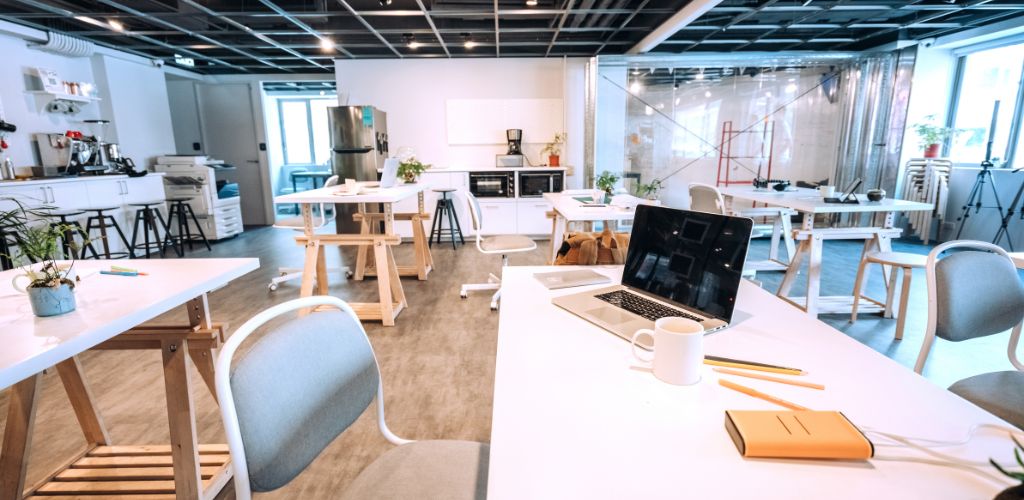
Being a digital nomad in Dubrovnik, you’re probably interested in coworking spots. Although there are many remote workers here, the city is primarily aimed toward tourists, and there are yet to be any good quality coworking spaces.
The good news is that you’ll find plenty of great cafes to work from, and I’ll talk about those shortly.
Another plus point of staying in Dubrovnik is the internet. I didn’t experience any problems with WiFi during my time in Dubrovnik, even when using it for heavy work, such as video calls. According to Speedtest, the average upload and download speeds in Dubrovnik are 13.64 Mbps and 31.16 Mbps respectively.
Best Cafes to Work From in Dubrovnik
There aren’t any coworking spaces in Dubrovnik, but there are plenty of great, laptop-friendly cafes you can use instead. When living in Dubrovnik as a digital nomad, I found several spots to perfectly suit my needs. Here are my recommendations:
- Nishta: I really liked this cafe, not only because it’s right in the heart of the Old Town, but because it’s a cozy space with comfortable chairs, great WiFi, and fantastic coffee. What more could you want?
- Buzz Bar: If you visit this bar/cafe during the day, you’ll find it to be laidback, affordable, and comfortable for a few hours of work. However, it’s best to leave before 6 pm as it gets quite busy and loud.
- Urban & Veggie: If you’re vegan, this is the place for you. They offer delicious plant-based snacks and treats, but it’s also a comfortable place to work from. The staff don’t mind you using your laptop, and I was pretty productive from this spot.
Activities and Things To Do in Dubrovnik
While living in Dubrovnik, your days off will be packed. For me, the best thing about life in this city is that you’re never too far away from a sight, a beach, or simply a great cafe to sit and chill for a while.
To give you an idea of what you can spend your free time on, here are my top picks:
1. Dubrovnik City Walls
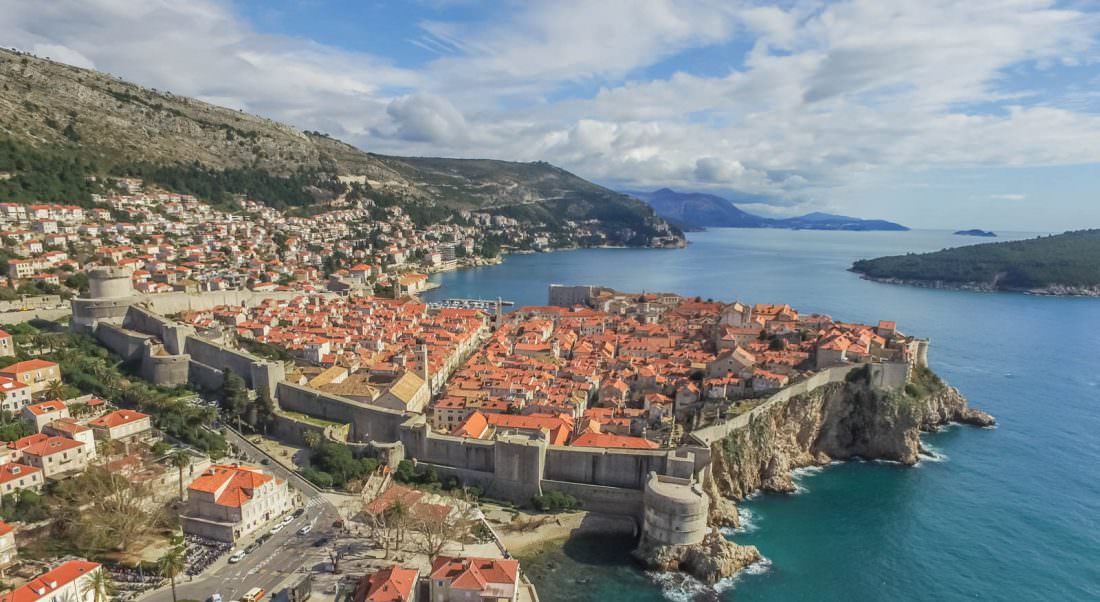
Hands down, the number one thing to do in Dubrovnik is to walk around the city walls. However, there is a big but coming your way: it’s best to do this very early in the morning or outside of the peak season. In July and August, it’s nearly impossible to walk around here and enjoy it due to the crowds.
Despite that, it’s still my favorite thing to do – make sure you clear plenty of space on your..


